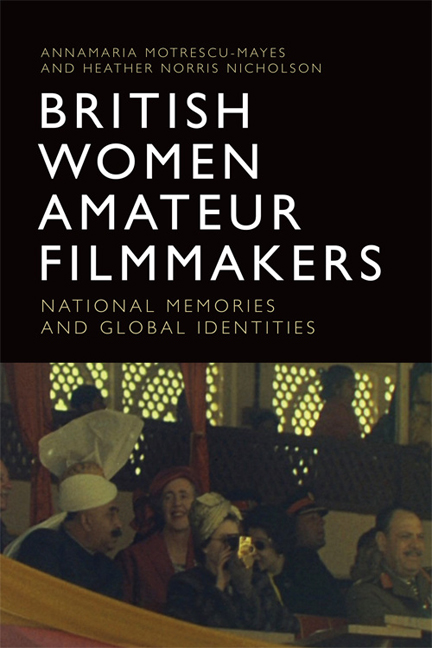Book contents
- Frontmatter
- Contents
- List of Figures
- List of Sources and Abbreviations
- Acknowledgements
- Foreword
- 1 Amateur Women Filmmakers as Producers of Cultural Meaning
- 2 Webs of Production and Practice
- 3 Resisting Colonial Gendering while Domesticating the Empire
- 4 Cameras Not Handbags: The Essential Accessory
- 5 Through Women's Lens: Imperial and Postcolonial Class and Gender Hierarchies
- 6 Teacher Filmmakers
- 7 British Women's Media Narratives of Gender and Collective Memory
- 8 Reimagining Boundaries: Amateur Animations
- Afterword
- Selected Bibliography
- Index
8 - Reimagining Boundaries: Amateur Animations
Published online by Cambridge University Press: 12 November 2019
- Frontmatter
- Contents
- List of Figures
- List of Sources and Abbreviations
- Acknowledgements
- Foreword
- 1 Amateur Women Filmmakers as Producers of Cultural Meaning
- 2 Webs of Production and Practice
- 3 Resisting Colonial Gendering while Domesticating the Empire
- 4 Cameras Not Handbags: The Essential Accessory
- 5 Through Women's Lens: Imperial and Postcolonial Class and Gender Hierarchies
- 6 Teacher Filmmakers
- 7 British Women's Media Narratives of Gender and Collective Memory
- 8 Reimagining Boundaries: Amateur Animations
- Afterword
- Selected Bibliography
- Index
Summary
Don't give up … it's worth it for the magic and lasting pleasure animation can bring. (Graber 1982: 231)
For the amateur turned professional animator, Sheila Graber, cats and cartoons seem inseparable and part of the lasting pleasure of making films. As companions while she animates and as recurring characters, her feline figures are part of what Wells (1998: 122) calls an inner personal world made visible by animation. Their role in offering practical tips and reassurance to the amateur animator spanned decades: they enlivened an often earnest hobby literature and were reminders that even the committed amateur could be playful. Given their wider association with animation history, might we see also Graber's cats as an embodiment of the successful animator's skill in combining personal curiosity, ingenuity and patience? If, as Honess Roe (2013: 106) suggests, animation relies upon oblique and often metaphorical ways to evoke meaning and response, her notion of the genre's capacity to tap into memories and histories passed on through families and indeed whole cultures also seems pertinent to exploring female amateur animation. Given women's roles in curating cultural knowledge and family biographies, animated storytelling offers alternative ways of sharing historical experiences. The surrealist animator Jan Svankmajer, in his BBC broadcast The Magic Art of Jan Svankmajer in 1992, also suggests that animation helps to redefine the everyday (cited in Wells 1998). It invites viewers to question reality and challenge perceptions. Writing about the British animator, Joanna Quinn, Gomez (2010) speaks of ‘the small details which fuel our everyday life’ and anecdotes that provide her inspiration; Garcia (2010) similarly refers to how ‘intimate routine moments’ and ‘fragments’ of reality provide Quinn's ‘raw material’ and ‘source of creative input’. As seen later, Graber draws much of her humour from familiar places and people. Animating thus holds a mirror to the live action discussed in this book and highlights how, in Roe's (2013: 22) words, animation's capacity to reach ‘temporally, geographically, and psychologically’ enables some women to explore aspects of their own lives and circumstances more freely.
National narratives of animation history have long privileged male agency and under-recognised women's contribution. As Britain's pioneering animators gain better visibility, it is appropriate to identify those women animators who made films alone, or with friends or family.
- Type
- Chapter
- Information
- British Women Amateur FilmmakersNational Memories and Global Identities, pp. 196 - 226Publisher: Edinburgh University PressPrint publication year: 2018

